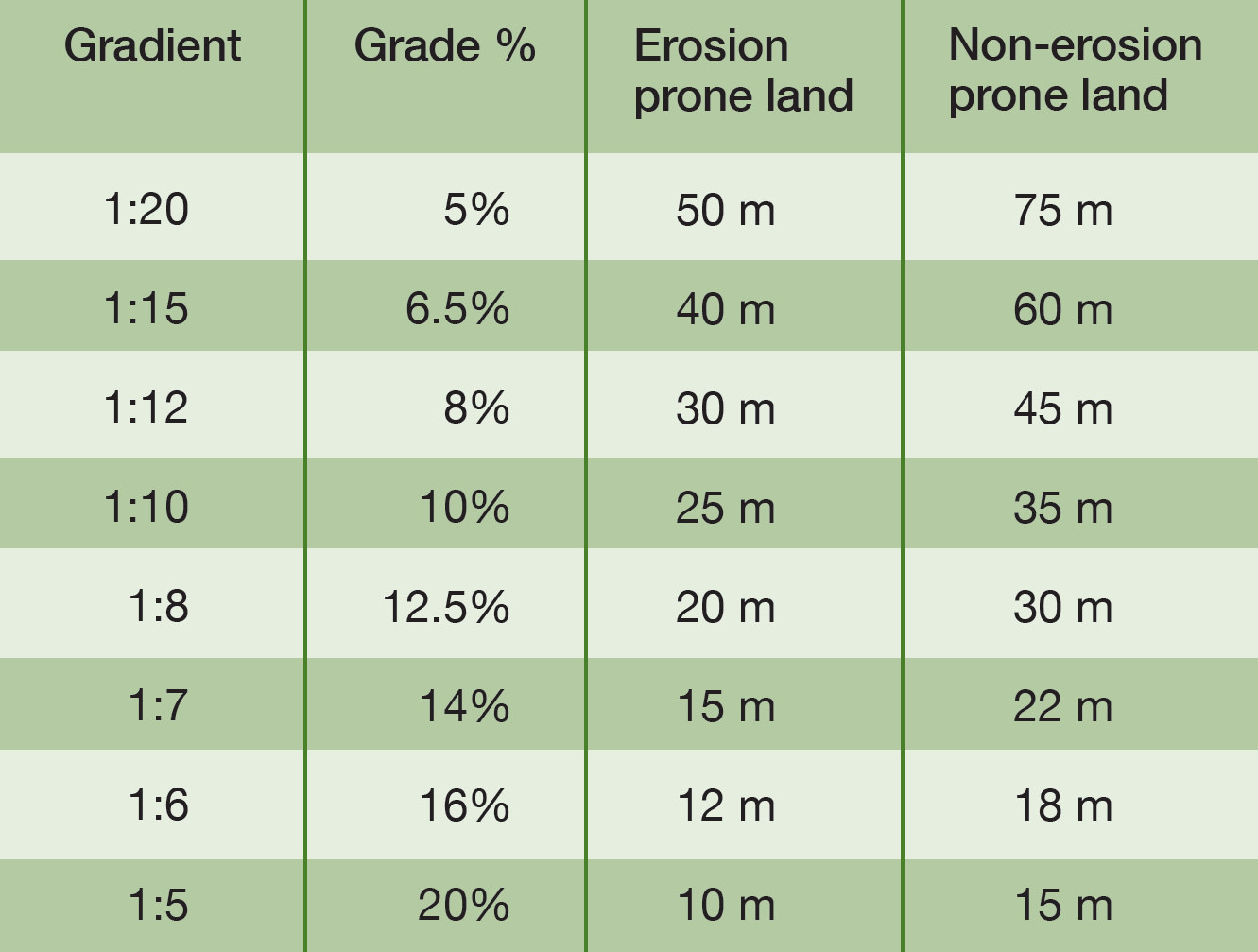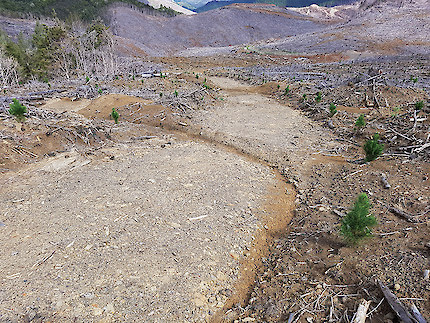Cut-outs are the most common stormwater control measure used to rehab tracks.
Where is a good place to put in a cut-out?
Step 1: Get the spacing right
- The steeper the track, and the more erosion-prone the soil is, the closer the cut-outs need to be
- On some tracks, cut-outs need to be very close
- Use the table below as a guide
Table 14: Spacing guide for cut-outs

Step 2: use the terrain to decide where to put them in
Use the shape of the land to help locate the best spots:
- In the bottom of track dips or undulations
- Where water can drain off the track and onto stable ground
- Where they don’t go directly into water bodies
How do you construct a good cut-out?
These things make a good cut-out:
- Constructed across the entire track
- Angle it downslope to help drain water
- Ensure there is no ponding
- Build a small compacted bund on the downhill side to stop water going over the top of it
- Dig at least 300 mm deep
- Build the exit on stable ground, so it does not erode and create sediment
- Drain water into a slash filter, soak hole or sediment trap where needed
